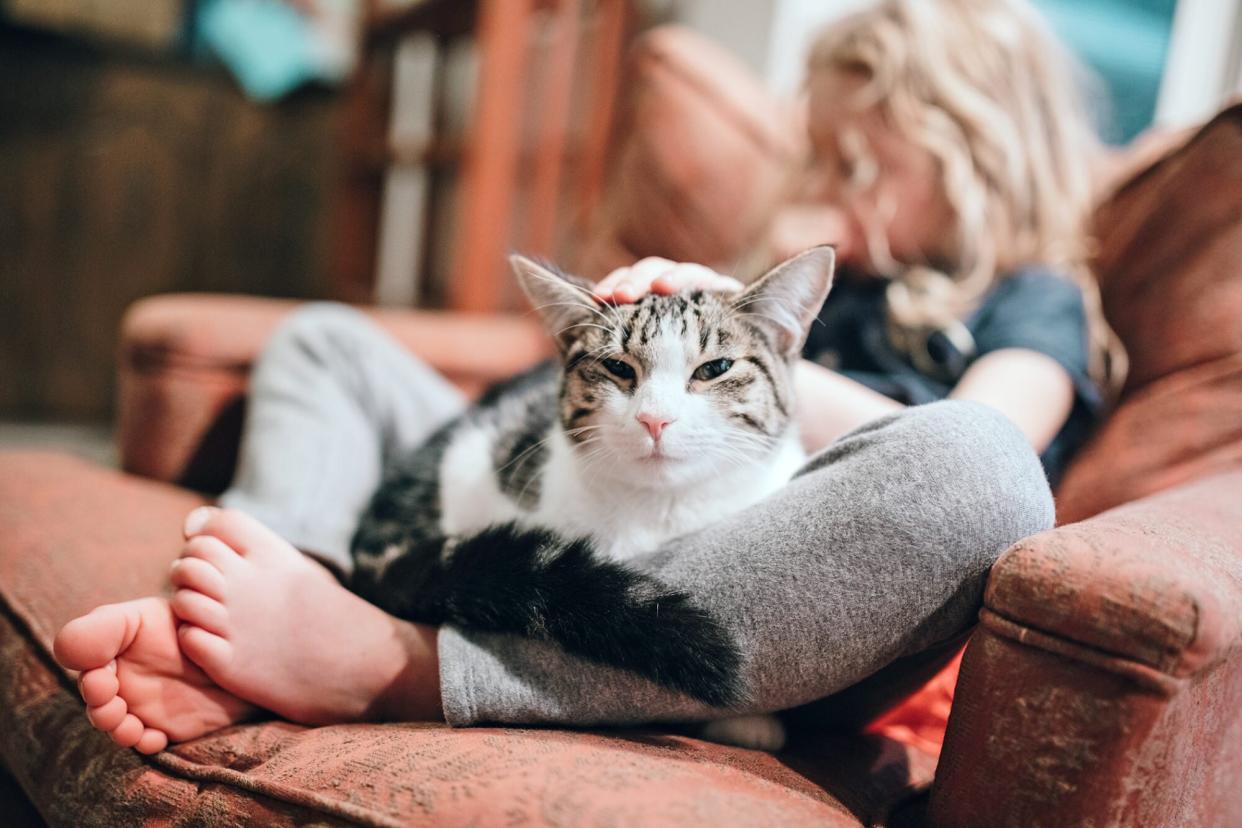Liver Disease in Cats Is Difficult to Spot, so Here's What To Know To Get Treatment for Kitty ASAP

Ryan J Lane / Getty
Generally, liver disease in cats doesn't really have stages: it registers as a mild, moderate, or severe case. What's puzzling about it, according to Tarina L. Anthony, DVM, is that symptoms are often subtle and non-specific.
As a longtime practitioner of feline-exclusive medicine, and owner and medical director of Aurora Cat Hospital and Hotel in Aurora, Colo., Anthony says early diagnosis of cat liver disease is critical to make sure treatments can be started right away.
Causes of Liver Disease in Cats
The liver is the catalyst to many processes keeping your feline healthy, including blood clotting, detoxification, food metabolism, and producing bile. If liver damage occurs somehow, liver disease is the result.
"Liver disease can be primary—a problem with the liver itself; or secondary—meaning liver damage is secondary to another disease process," Anthony says.
Examples of primary liver disease include:
Cholangitis, which is inflammation of both the liver and biliary system. Cornell Feline Health Center indicates this condition, along with hepatic lipidosis (also known as fatty liver disease in cats), "account for perhaps two-thirds of all feline liver disorders treated at the typical cat clinic or veterinary hospital."
Infectious hepatopathies from sources such as the viral disease feline infectious peritonitis, parasitic liver flukes, and toxoplasmosis, another parasitic condition
Hepatic cancer
Toxins that affect the liver, such as those found in certain houseplants, including sago palms.
Anthony says secondary liver diseases include hepatic lipidosis and hepatopathy secondary to hyperthyroidism. "Liver shunt, a congenital problem with blood flow to the liver, can also occur in cats, but is more common in dogs," Anthony adds. Feline diabetes might also cause liver complications.
RELATED: Signs of Liver Disease in Dogs and How to Treat It
Signs and Symptoms of Cat Liver Disease
Remember how we said sometimes liver disease is hard to spot in your kitty? This is because the best early warning symptoms—those that help you and your veterinarian start treatment right away—are common for other illnesses, too, such as kidney disease or vestibular disease.
Regardless, if you notice any of the following, it's time for a trip to the vet clinic:
Anthony says because of their subtlety, these symptoms of cat liver disease often aren't recognized by cat parents until late into its progression.
Icterus, also known as jaundice, is another sign of the disease, which Anthony says appears as a yellow tint to the skin, gums, and white parts of the eyes. "It varies from being subtle and almost peach-orange in color to bright yellow, like a highlighter," Anthony says. "Though this may seem like an obvious symptom, it too can be missed by owners in the home setting due to low, often warm-toned lighting in residences."
Severe liver disease in cats might present with vomiting and complete anorexia (no appetite at all) later in the course of the illness. Anthony adds some pet owners report bile-colored (bright green-yellow) vomit in advanced cases.
RELATED: 9 Signs That You Need to Take Your Pet to the Emergency Room
How to Treat Liver Disease in Cats
When you take kitty in for an exam, Anthony says your vet will likely want to do some blood work and even an ultrasound for confirmation of liver disease.
"Blood work typically shows elevated liver enzymes to some number and degree, and sometimes increased bilirubin (a pigment in the blood and bile) as well as increased white blood cells, and changes to the shape of the red blood cells (called poikilocytosis)," she says. "An abdominal ultrasound may show a large, rounded, or small, shrunken liver, liver masses, blockage of the biliary tree (including stones), or mild changes to the liver texture."
While abdominal x-rays may show a large liver or liver mass, she adds, an ultrasound is far more sensitive.
Based on the diagnosis, your vet might focus treatment on the underlying cause first. "Treating hyperthyroidism, for example. When a cat has hepatic lipidosis, this is often from not eating, so therapy is based on appetite stimulants, anti-nausea medications, and sometimes pain relief, especially if there is concurrent pancreatitis," Anthony says.
If your pet suffers from a primary liver condition, the treatment plan might include antibiotics, liver protectant supplements like SAMe, and prescription ursodiol, which increases bile flow. Blockages and shunts, Anthony says, may be best treated with surgery.
Cat liver disease home treatments usually begin with immediate clinical attention, followed by what supplements and supportive care your vet recommends within a broader scope of care. For example, in mild or moderate recovery situations, proper nutrition and feeding is critical to a return to health. MSD Veterinary Manual advises high-protein, calorie-dense, balanced meals in small but frequent intervals.
"Treatment at home may be instituted for mildly-affected cats, but owners should be prepared for multiple treatments a day, and possibly a feeding tube," Anthony adds.
What's the Outlook for Cats with Liver Disease?
Although the liver can regenerate in mild or even moderate cases and regain normal function, Anthony says a liver disease prognosis for your furry friend depends on how early the issue is caught and when treatment is instituted.
"Unfortunately, many of these cases aren't seen until the cat is very ill," she notes. "They often require hospitalization for several days with aggressive rehydration, nutritional support, and medications." The prognosis in these situations is case-by-case, especially if underlying or co-occurring conditions exist.
Anthony adds that liver disease in cats is challenging to flesh out since the symptoms are often subtle and the causes of the disease are so varied. "The main takeaway for any cat owner is: watch your cat closely for changes in appetite, activity, and body weight," she says. "Take your cat to a vet right away so the disease can be determined quickly. And prepare yourself for a lengthy, sometimes expensive, treatment plan."
RELATED: Everything You Need to Know About the Cost of a Vet Visit

